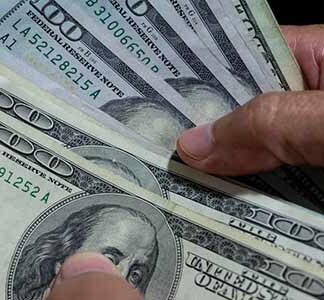The cashless payment system is expanding at an exponential rate as a result of the proliferation of new payment systems, the increasing popularity of online shopping, improvements in internet access, and the introduction of innovative technology. The expansion of the online payment market could be slowed down by the rising number of instances of cyberattacks and spam, but it is expected to continue expanding at a fast rate.
Know how payment gateway evolved in India
It is anticipated that the global market for digital payments will reach USD6.6 trillion in the year 2021, representing a growth of around 40 per cent in just two years. Cashless payment systems are fast developing with ground-breaking technologies, including mobile payments, peer-to-peer (P2P) contactless payments, real-time payments, as well as cryptocurrencies. In this increasingly digital age, numerous organizations that specialize in payment gateway are teaming up with traditional banking in order to meet the requirements of the most recent preferences held by consumers and business owners.
The proliferation of online payment gateways
An increase in the prevalence of digital payment methods in India is providing impetus for growth in the market for payment gateway in India. The transition away from a cash-based economy is receiving increased attention as a result of government measures, which are helping to improve the digital payment sector. One example of this would be the Digital India program, which is a flagship government initiative of India that aims to make India into a society that is digitally informed.
In November 2016, the administration engaged in a huge currency plucking exercise known as demonetization that resulted in the invalidation of 86 per cent of the currency that was in circulation at the time. This action was taken in an effort to combat the circulation of illegal funds, the financing of terrorist organizations, and the counterfeiting of cash. This was one of the primary motivating factors that led to the proliferation of a variety of payment gateway across the country.
The effect of the covid
The COVID-19 epidemic that occurred four years later was another factor that contributed to the widespread adoption of digital forms of payment. People avoided utilizing currency as much as possible because they were anxious about interacting with one another. The number of people using cards, UPI, wallets, and online banking increased significantly, while ATMs began to have the appearance of being deserted. The number of UPI transactions reached an all-time high in the month of November, reaching 221 crore transactions with a total value of Rs. 3.9 lakh crore. The use of cash was supplanted by contactless financial transactions as the preferred method.
Favourable Regulatory environment
The government and many other regulatory agencies have come to the realization that it is necessary to keep up with the ever-shifting environment, particularly with regard to technological advancements and the perspectives of customers.
Policies such as “Know Your Customer” (KYC) relaxation for minor purchases, Adhaar enabling the process of KYC easier, exemptions from two-factor authentication, and also the encouragement of cashless transactions even by the Modi government have almost all contributed significantly to the success of digital payments.
Enhanced quality of the experience for the consumer
As a result of the proliferation of e-commerce in India, customers have become accustomed to having a more satisfying overall experience. The ease of purchasing almost anything while sitting on the couch, and sometimes even choosing Uber and Ola journeys, save the headache of applying the precise amount via cash later on. When it comes to providing a seamless user experience, payment gateway is becoming the activity that takes place in the shadows.
The proliferation of different payment gateways in India is expanding as a direct result of the rise in the number of transactions conducted via electronic commerce. As per the Indian Brand Equity Foundation, the e-commerce business in India has been on an upwards development path and is predicted to overtake the United States to be the next second-largest e-commerce industry in the world by the year 2034. By the year 2020, it is anticipated that the market for e-commerce will approach 64 billion USD, and by the year 2026, it is anticipated that it will reach 200 billion USD.
The sector of the economy that deals in online commerce are benefiting from a variety of regulatory initiatives being undertaken by the government. E-commerce between businesses is open to one hundred per cent Foreign Direct Investment (FDI) in India. The newly issued guidelines for foreign direct investment (FDI) in e-commerce state that the marketplace structure of e-commerce may accept one hundred per cent FDI via the automatic method.
Conclusion
Consumers are growing more tech-savvy, but the use of smartphones and the internet has become more widespread, which creates boundless prospects for the markets pertaining to the digital gateway. Following the epidemic, it is projected that the growth of digital payment solutions will persist and accelerate over the subsequent years. Cards are still the most popular method for making payments all across the world, but mobile wallets are gradually becoming more popular. The traditional income stream at bank branches and ATMs is dropping, which demonstrates a significant drive towards cashless transactions.

















